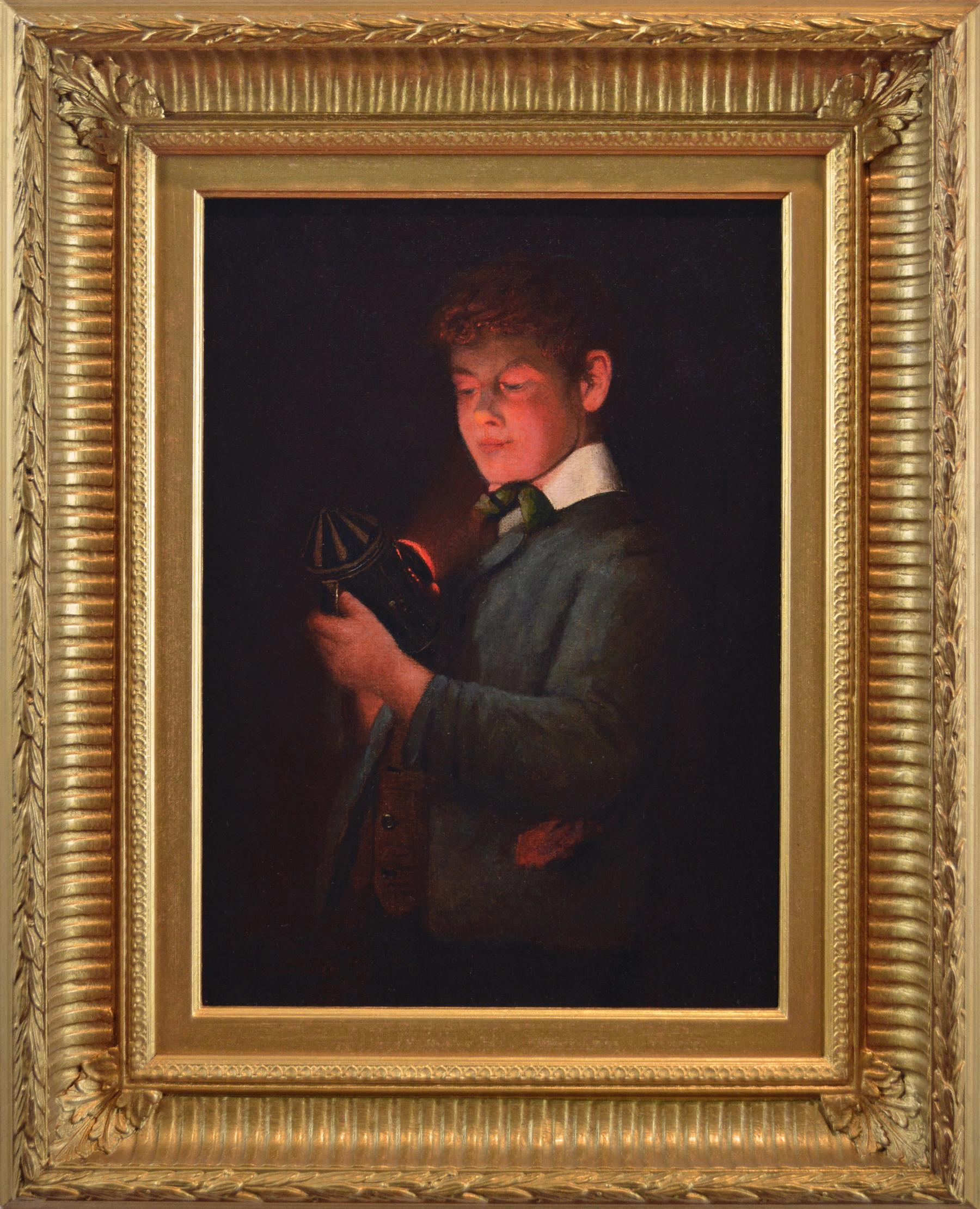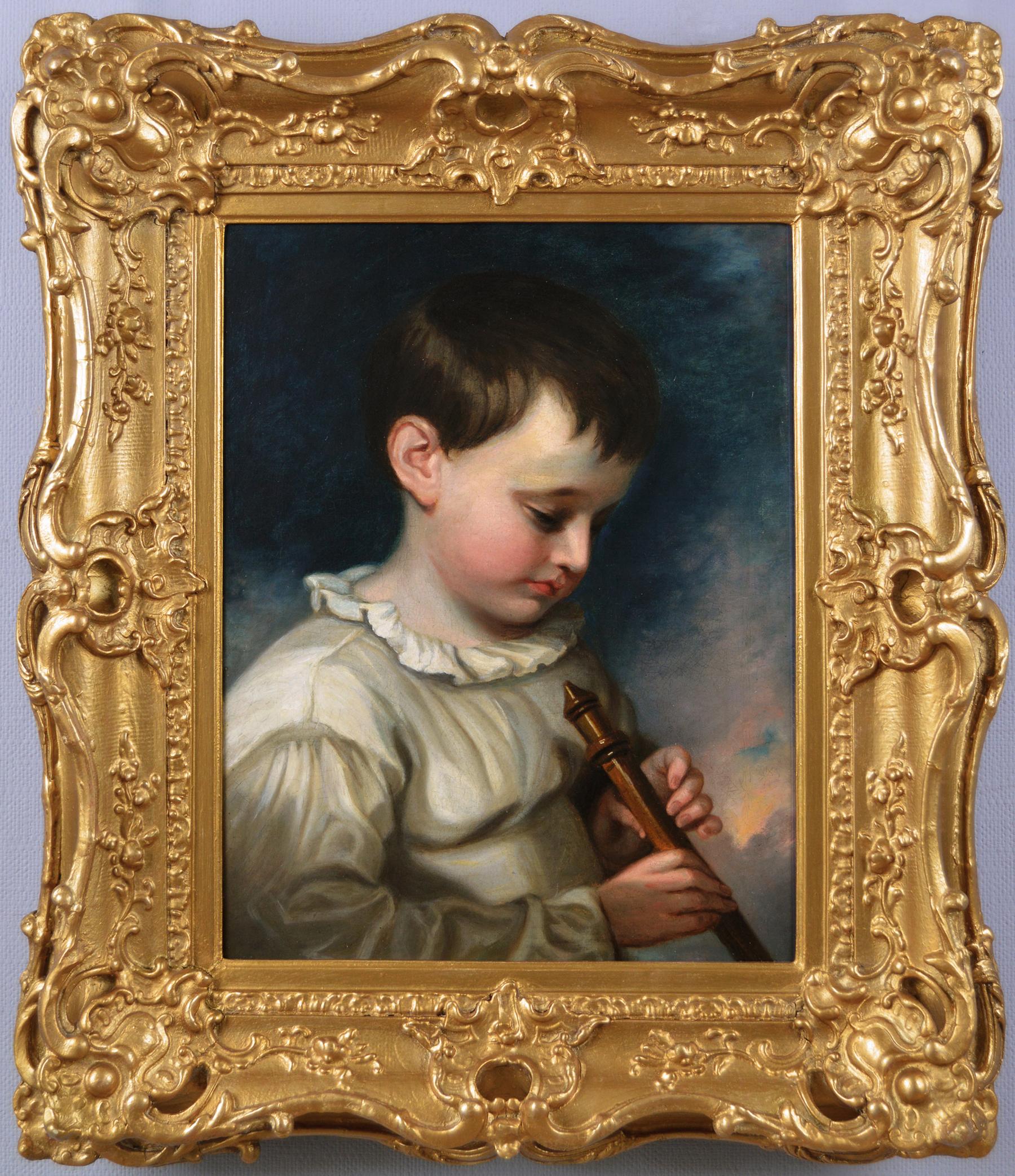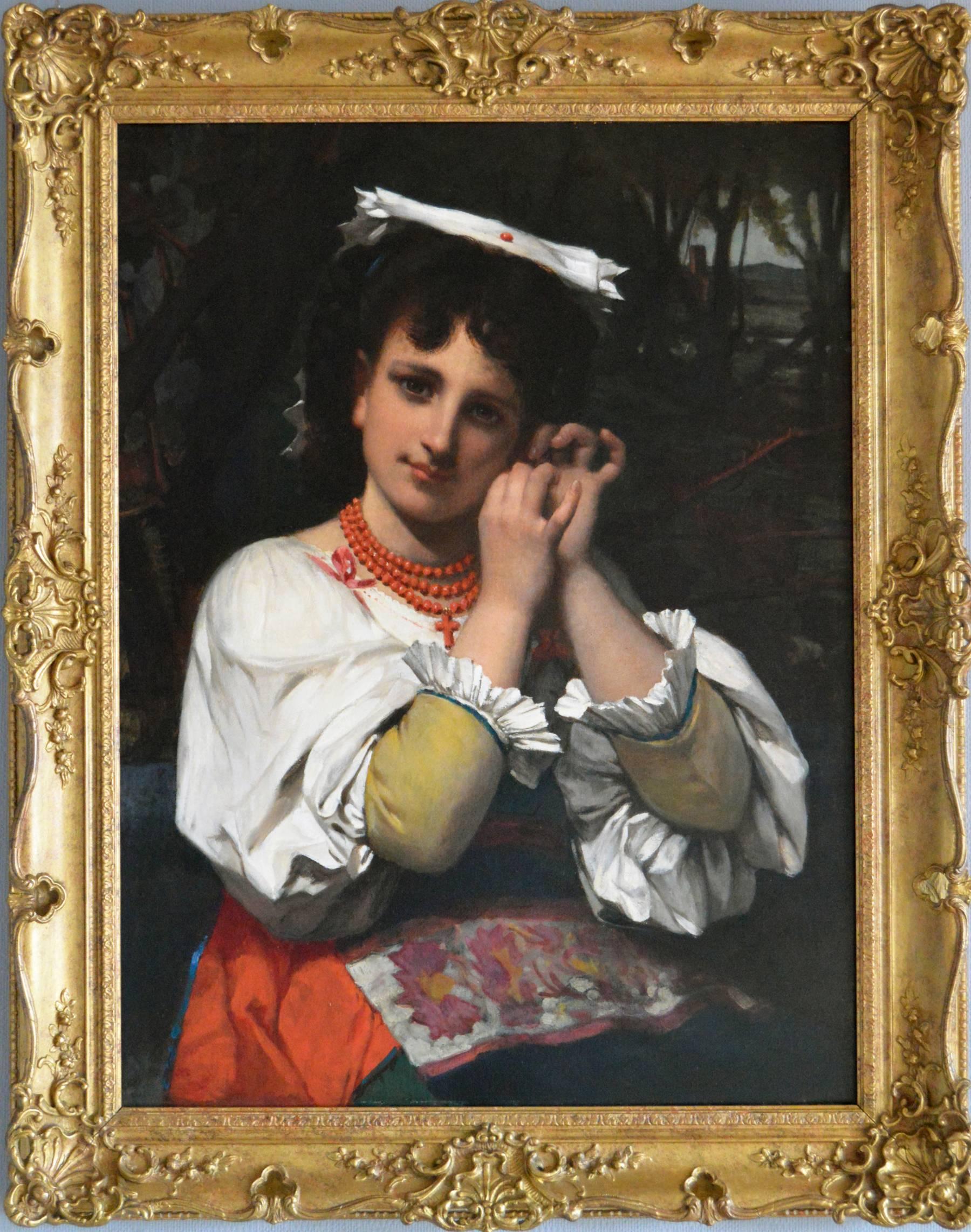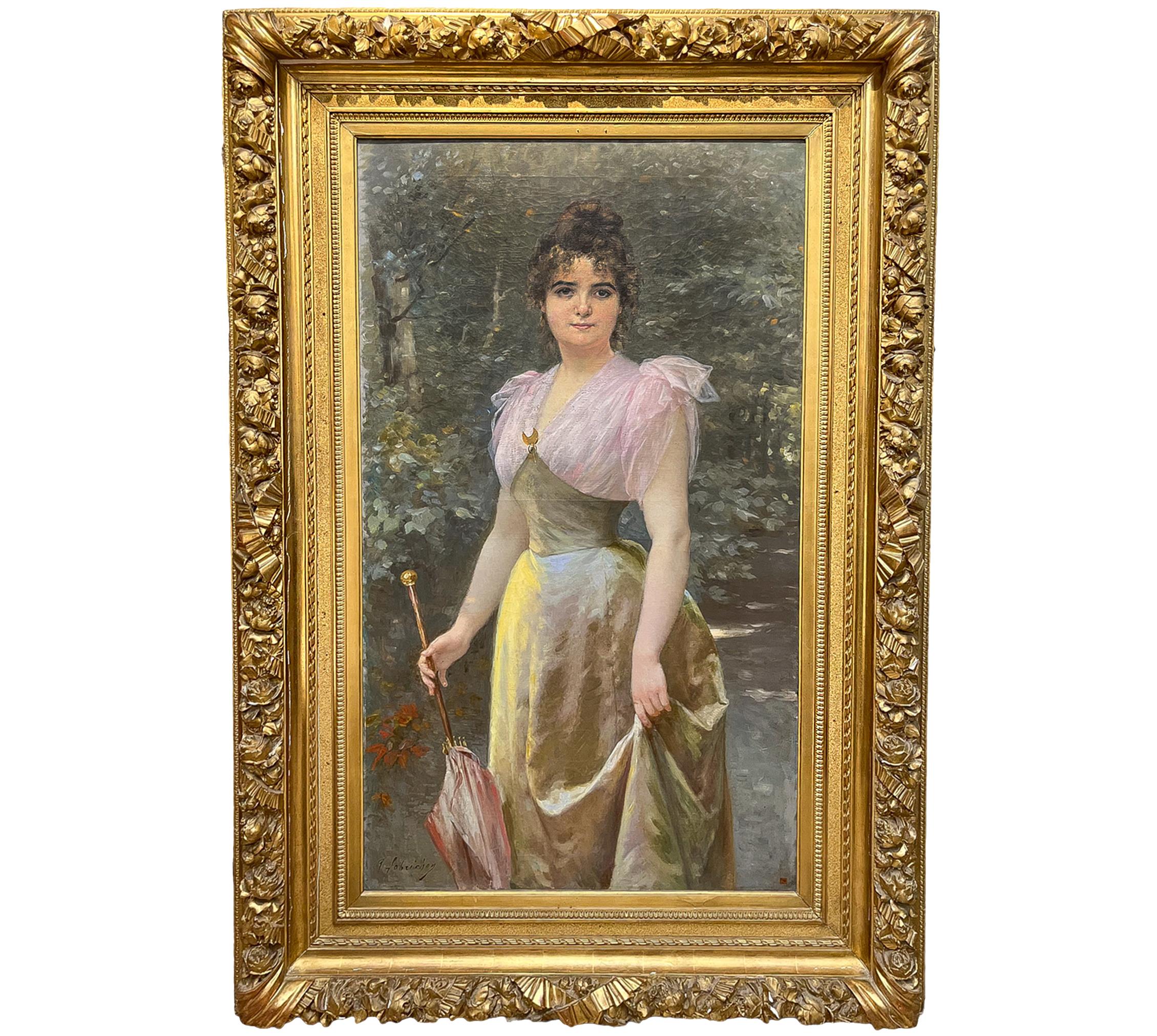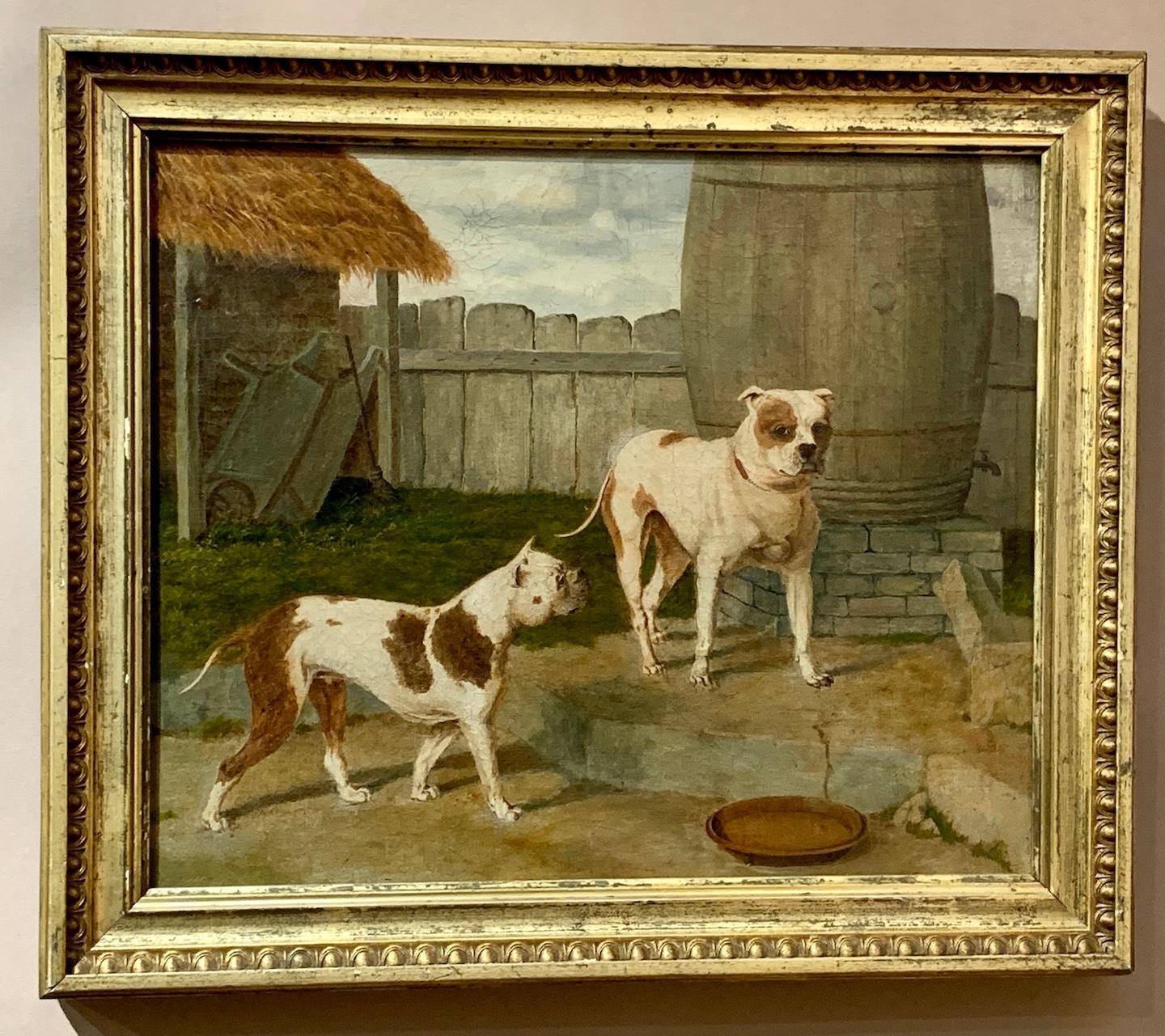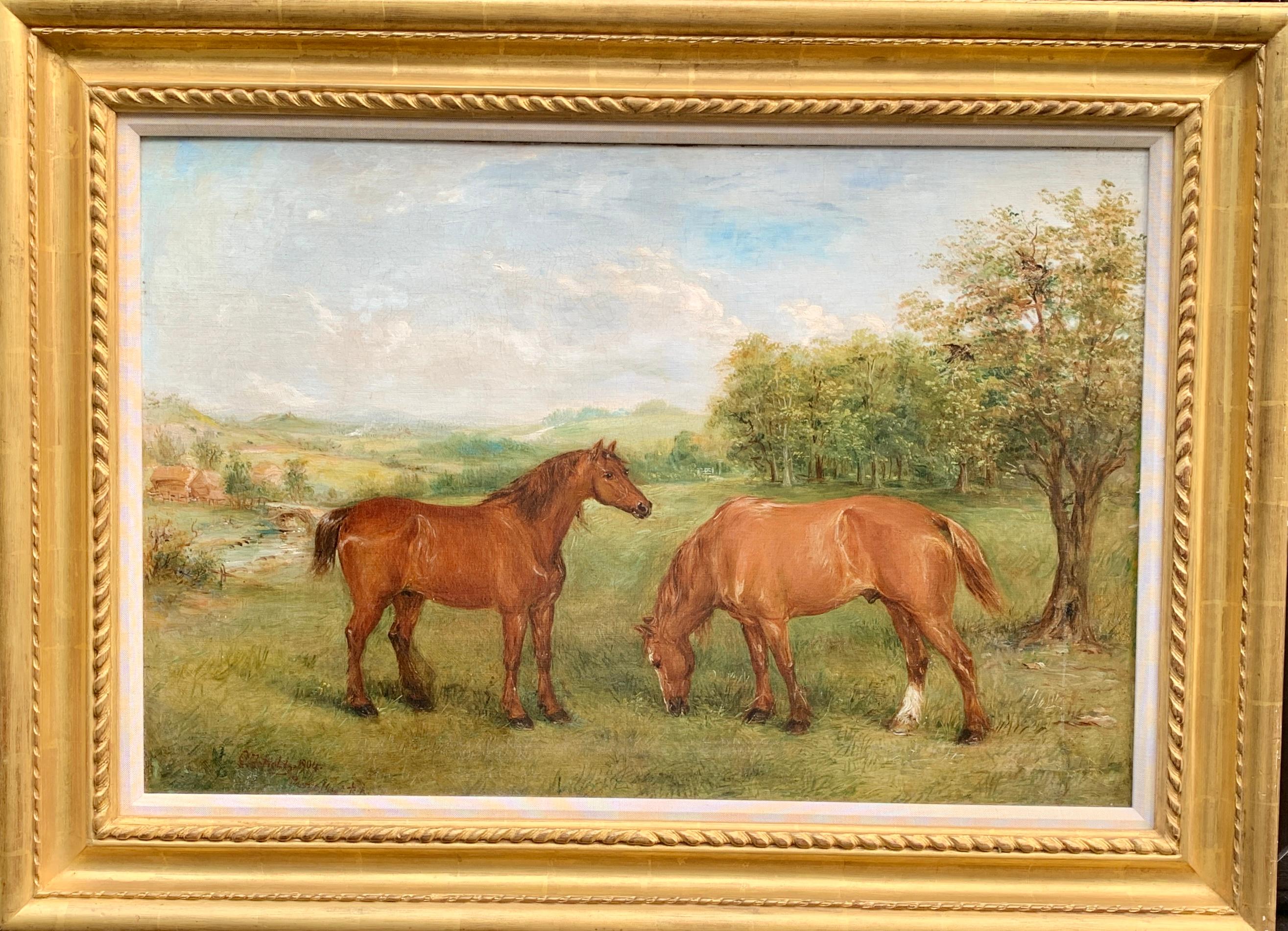Items Similar to Portrait of Herbert Fisher, Mid-19th Century Oil Painting, Original Watts Frame
Want more images or videos?
Request additional images or videos from the seller
1 of 6
George Frederic WattsPortrait of Herbert Fisher, Mid-19th Century Oil Painting, Original Watts Framec.1855-1860
c.1855-1860
About the Item
Oil on canvas
c.1855 - 1860
Image size: 19 x 14 inches (48.25 x 37.25 cm)
Original Watts frame
The Sitter
Herbert William Fisher (1826 - 1903) was a British historian, best known for his 'Considerations on the Origin of the American War' (1865). Fisher was tutor to the future King Edward VII, and served as Private Secretary to the 5th Duke of Newcastle. in 1863 he became Private Secretary to the Prince of Wales, his former pupil, before being appointed to the position of Vice-Warden of the Stannaries in 1870. One of his daughters, Adeline, married Ralph Vaughan Williams.
George Frederick Watts
Watts (1817 - 1904) was a British painter and sculptor associated with the Symbolist movement. He is known to have said 'I paint ideas, not things'. Watts became famous in his lifetime for his allegorical works, such as 'Hope' and 'Love and Life' in which the emotions and aspiration life were intended to be represented in a universal symbolic language.
Watts was born in Marylebone in central London on the birthday of George Frederic Handel (after whom he was named), to the second wife of a poor piano-maker. He showed artistic promise very early, learning sculpture from the age of 10 with William Behnes, starting to study devotedly the Elgin Marbles (later writing "It was from them alone that I learned") and then enrolling as a student at the Royal Academy Schools at the age of 18.
He first exhibited at the Academy in 1837, with a picture of "The Wounded Heron" and two portraits, but his attendance at the Academy was short-lived, and his further art education was confined to personal experiment and endeavour, guided by a constant appeal to the standard of ancient Greek sculpture. He also began his portraiture career, receiving patronage from his close contemporary Alexander Constantine Ionides, who later came to be a close friend. In 1849 the first two of the allegorical compositions which form the most characteristic of the artist's productions were exhibited—"Life's Illusions," an elaborate presentment of the vanity of human desires, and "The people that sat in darkness," turning eagerly towards the growing dawn. In 1850 he first gave public expression to his intense longing to improve the condition of humanity in the picture of "The Good Samaritan" bending over the wounded traveller; this, as recorded in the catalogue of the Royal Academy, was "painted as an expression of the artist's admiration and respect for the noble philanthropy of Thomas Wright, of Manchester," and to that city he presented the work. From the late 1840s onward he painted many portraits in France and England, some of which are described below. Notable pictures of the same period are “Sir Galahad” (1862), “Ariadne in Naxos” (1863), “Time and Oblivion” (1864), originally designed for sculpture to be carried out “in divers materials after the manner of Pheidias,” and “Thetis” (1866).
Watts's association with Rossetti and the Aesthetic movement altered during the 1870s, as his work increasingly combined Classical traditions with a deliberately agitated and troubled surface, to suggest the dynamic energies of life and evolution, as well as the tentative and transitory qualities of life. These works formed part of a revised version of the House of Life, influenced by the ideas of Max Müller, the founder of comparative religion. Watts hoped to trace the evolving "mythologies of the races [of the world]" in a grand synthesis of spiritual ideas with modern science, especially Darwinian evolution.
Many of his paintings are owned by Tate Britain – he donated 18 of his symbolic paintings to Tate in 1897, and three more in 1900. Some of these have been loaned to the Watts Gallery in recent years, and are on display there. He was also admired as a portrait painter. His portraits were of the most important men and women of the day, intended to form a "House of Fame". In his portraits Watts sought to create a tension between disciplined stability and the power of action. He was also notable for emphasising the signs of strain and wear on his sitter's faces. Of his British subjects many are now in the collection of the National Portrait Gallery: 17 were donated in 1895, with more than 30 more added subsequently
- Creator:George Frederic Watts (1817 - 1904, British)
- Creation Year:c.1855-1860
- Dimensions:Height: 19 in (48.26 cm)Width: 14 in (35.56 cm)
- More Editions & Sizes:1 of 1Price: $25,221
- Medium:
- Movement & Style:
- Period:
- Condition:
- Gallery Location:London, GB
- Reference Number:1stDibs: LU52413220652
About the Seller
5.0
Vetted Seller
These experienced sellers undergo a comprehensive evaluation by our team of in-house experts.
Established in 2007
1stDibs seller since 2014
63 sales on 1stDibs
Typical response time: 4 hours
- ShippingRetrieving quote...Ships From: London, United Kingdom
- Return PolicyA return for this item may be initiated within 14 days of delivery.
More From This SellerView All
- UnaLocated in London, GBRichard Waller 1811 - 1882 Una Oil on canvas, signed lower right and dated 1879 Image size: 23 1/2 x 19 1/2 inches (59.5 x 49.5 cm) Original frame Una is one of the main characters in the first book of Edmund Spenser...Category
19th Century Victorian Portrait Paintings
MaterialsOil, Canvas
- Portrait of Miss Tonks, Signed and dated 19th Century OilLocated in London, GBOil on canvas, signed and dated lower right 1882 Image size: 36 x 29 inches (92 x 74 cm) Gilt Watts frame LITERATURE The Life and Work of Frank Holl, Ada ...Category
19th Century Victorian Portrait Paintings
MaterialsOil, Canvas
- Portrait of a Girl with Book, 18th Century Regency Oil PaintingLocated in London, GBOil on canvas Image size: 28 3/4 x 24 inches (73 x 61 cm) Contemporary style gilt frame This portrait is an evocative example of Devis' Regency period portraiture, featuring a pleasant looking young girl holding a book in an outdoor setting. Working with a darker palette, a strongly accented diagonal recession, and dramatic contrasts of light and shadow, Devis heightens the girl's three-dimensional physical presence in the foreground of the composition. The Artist Arthur William Devis (10 August 1762 – 11 February 1822) was an English painter of history paintings and portraits. He painted portraits and historical subjects, sixty-five of which he exhibited (1779–1821) at the Royal Academy. Among his more famous works are a depiction of the Death of Nelson and a posthumous portrait of Nelson. Devis was born in London, the nineteenth child of the artist Arthur Devis and his wife Elizabeth Faulkner. Devis was the younger brother of the painter Thomas Anthony Devis (1757–1810) and of the schoolmistress and grammarian Ellin Devis (1746–1820), teacher, among others, of author of Maria Edgeworth and Frances Burney (later novelist Madame d'Arblay). He followed his elder brother Thomas Anthony in becoming a pupil at the Royal Academy Schools in 1774 and like his brother exhibited at the Free Society of Artists, of which in 1768 their father had become president, and at the Royal Academy. Early on he came to the notice of Sir Joshua Reynolds. He was appointed draughtsman on the British East India Company's packet Antelope in a voyage in 1783, under Captain Henry Wilson. In her he was injured in an encounter with Papuans near the Schouten Islands and was then wrecked on the Pelew Islands before proceeding to Canton and thence to Bengal. During his voyages, the artist received arrow wounds, one of which inflicted permanent injury on his lower jaw. During his time in Bengal, he painted a portrait of Sir William Jones, at the time a judge in Fort William. The painting now hangs at the British Library. He was back in London by 1795 and is recorded on 21 July 1797 as living at 27 George Street, Hanover Square, where he was insured by the Sun Assurance Office. He is noted for his involvement in the creation of the posthumous cult of Horatio Nelson. As she returned from Trafalgar, Devis went out to meet HMS Victory and was present on board the ship during the autopsy of Nelson's body conducted by Dr Beatty, the ship's surgeon. With the help of sketches he took at that time, he painted a heroic Death of Nelson, which proved a sensation. Devis also painted Dr Beatty, and was commissioned by him to produce a half-length painting of Nelson as vice-admiral, which he lent to Emma Hamilton (who later lost it in an accident whilst travelling). Either the original or a copy of this portrait was exhibited at the Royal Academy two years after the Battle and many copies were made of it. Lord Howe owned one, and another ended up in the collection of the National Maritime Museum. It also appeared as an engraving in Beatty's published account of Nelson's death. Other work includes a portrait of King George III on horseback, and a range of portraits of admirals and generals, along with historical subjects, such as the Babington Plot and the signing of the Magna Carta...Category
18th Century Victorian Portrait Paintings
MaterialsOil, Canvas
- Portrait of a Mary Hardy (nee Sulman), Late 19th Century Victorian OilLocated in London, GBSlade School Late 19th Century Portrait of a Mary Hardy (nee Sulman) Oil on panel Image size: 8 x 7 inches Contemporary frame Provenance Lady Town (Grandda...Category
Late 19th Century Victorian Portrait Paintings
MaterialsOil, Panel
- Portrait of a Young GirlLocated in London, GBOil on board Image size: 14 x 11 1/4 inches (35.5 x 28.5 cm) Gilt frame This is a striking and well-executed oval half-length portrait of a girl sitting in an armchair in a brown dress and a black lace scarf...Category
19th Century Victorian Portrait Paintings
MaterialsOil, Board
- Portrait of a Sleeping Woman Original Oil Painting Modern BritishBy Lionel EllisLocated in London, GBLionel Ellis 1903 - 1988 Portrait of a Sleeping Woman Oil on canvas Image size: 14 x 18 inches (35.5 x 45.5cm) Framed Lionel Ellis ARCA (1903-1988) was a...Category
20th Century Portrait Paintings
MaterialsOil, Canvas
You May Also Like
- Late 19th Century genre portrait oil painting of a boy holding a lanternBy Charles SpencelayhLocated in Moreton-In-Marsh, GloucestershireCharles Spencelayh British, (1865-1958) The Lantern Oil on canvas, signed Image size: 13.5 inches x 9.75 inches Size including frame: 20.25 inches ...Category
Late 19th Century Victorian Figurative Paintings
MaterialsCanvas, Oil
- Early 19th Century genre oil painting of a boy playing a fluteLocated in Moreton-In-Marsh, GloucestershireAttributed to Thomas Barker of Bath British, (1769-1847) Boy with Flute Oil on canvas Image size: 17.5 inches x 13.5 inches Size including frame: 26.75...Category
Early 19th Century Victorian Portrait Paintings
MaterialsCanvas, Oil
- 19th Century portrait oil painting of an Italian maidenBy Pierre-Louis-Joseph de ConinckLocated in Moreton-In-Marsh, GloucestershirePierre Louis Joseph De Coninck French, (1828-1910) The Coral Necklace Oil on canvas, signed Image size: 31 inches x 23 inches Size including frame: 38 inches x 30 inches Pierre Loui...Category
19th Century Victorian Portrait Paintings
MaterialsCanvas, Oil
- Portrait of An Early 1900's Lady by Timoleon Marie LobrichonBy Timoleon Marie LobrichonLocated in New York, NYA large and striking female portrait titled "Red Umbrella" by Timoleon Marie Lobrichon (French, 1831-1914) This darling young woman portrait wearing an early 1900's light pink and green satin dress. Her delicate and beautifully rendered hands reach into the light as her face and upper body are carefully shaded by the lush greenery around her. A half moon brooch...Category
Early 20th Century Victorian Portrait Paintings
MaterialsCanvas, Oil
- Antique 19th century English portrait two Bull Dogs in a yard.By John Frederick Herring Sr.Located in Woodbury, CTA wonderful 19th century portrait of two Bull dogs in a barnyard. Artist Bio: Herring was born on 12 September 1795 in Blackfriars, London, the eldest of nine children of Benjamin Herring...Category
1840s Victorian Animal Paintings
MaterialsCanvas, Oil
- Victorian 19th century portrait of an seated English Flower SellerLocated in Woodbury, CTVictorian 19th-century portrait of a seated English Flower Seller. This is a very pretty classic English Victorian Genre painting. The style ...Category
1850s Victorian Figurative Paintings
MaterialsCanvas, Oil
Recently Viewed
View AllMore Ways To Browse
Antique Cat Bank
Peter Max Spring Season
Van Stafford
Dior 2007 Saddle
Ladies Portrait
Girl In Yellow Dress Bernard
Raoul Viviani
Ruben Ward
Sir Thomas Fairfax
Tracy Stuckey American Progress
Ford Torino Used
Frederick 1711
Grumpy Fisherman
J Amar
Joanna Of Castille
Johnson Ocheja
Katherine Fraser On Sale
Rainer Andreesen
